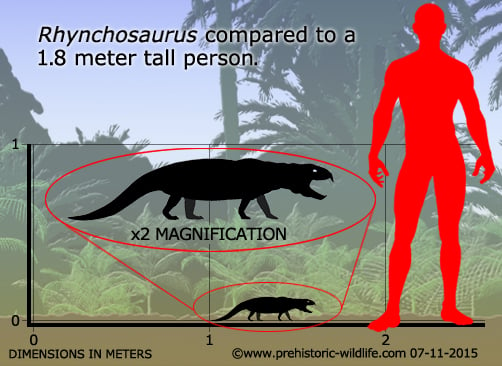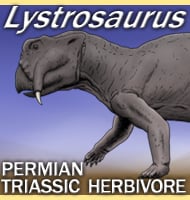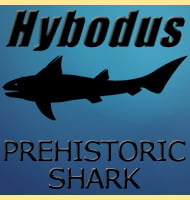In Depth
First described in 1842, Rhynchosaurus was the first ever rhynchosaur to be named, which is exactly why rhynchosaurs are called rhynchosaurs. Rhynchosaurus had a squat low slung body that was supported by all four legs. Rhynchosaurus is famous for the enlarged shearing teeth at the front of the mouth which would have easily sliced through tough plant matter.
Though confirmed as a genus in its own right, Rhynchosaurus has for a long time been used as a wastebasket taxon where a great many fossils have been attributed to the genus on the basis of only superficial similarities. More modern analytical practices and research reaching into the early twenty-first centuries has resulted in many of these fossils beening moved to other genera and species of rhynchosaur. One former species in particular, R. spenceri which was one of the large species, has now been re-classified as a distinct genus named Fodonyx. Furthermore, one specimen of this referred material has now also been confirmed as being different from both Rhynchosaurus and Fodonyx, and so yet another genus called Bentonyx was created with this specimen.
Further Reading
- Description of an Extinct Lacertilian Reptile, Rhynchosaurus articeps, Owen, of which the Bones and Foot-prints characterize the Upper New Red Sandstone at Grinshill, near Shrewsbury. - Transactions of the Cambridge Philosophical Society 7(3):355-369. - Richard Owen - 1842. - The species of Rhynchosaurus, a rhynchosaur (Reptilia, Diapsida) from the Middle Triassic of England. - Philosophical Transactions of the Royal Society of London, Series B 328:213-306. - Michael J. Benton - 1990. - A new genus of rhynchosaur from the Middle Triassic of south-west England. - Palaeontology 51 (1): 95–115. - David W. E. Hone & Michael J. Benton - 2008.










